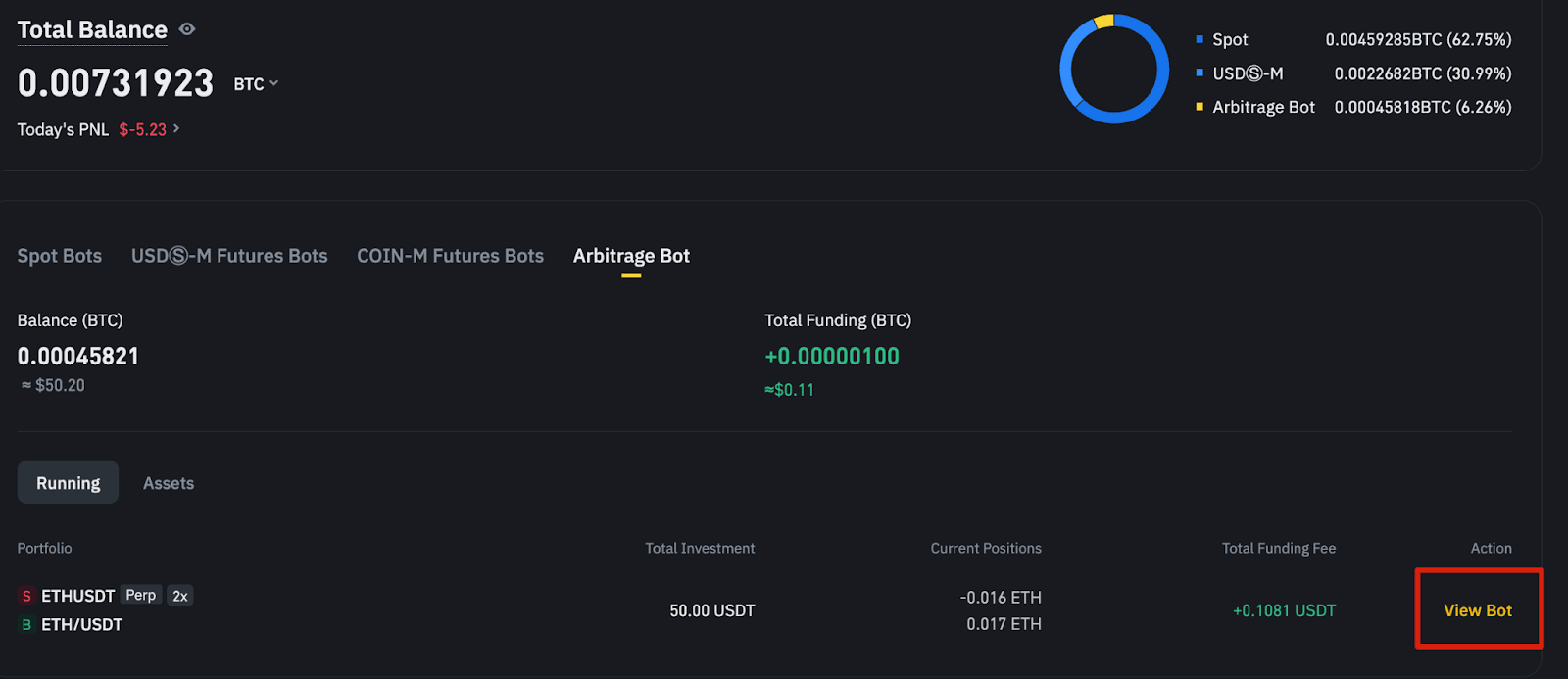Disclaimer: In compliance with MiCA requirements, unauthorized stablecoins are subject to certain restrictions for EEA users. For more information, please click here.
The Binance Funding Rate Arbitrage Bot is an innovative tool designed for traders to engage in arbitrage strategies between perpetual futures contracts and their spot equivalents.
It leverages the funding rate mechanism by hedging their futures positions with spot positions to collect funding fees.
Funding fees are periodic payments between long and short position holders in perpetual futures markets. They are designed to keep futures prices aligned with spot prices of the underlying asset.
Funding Fees = Position Size * Funding Rate
The funding rate determines the funding fee, and fluctuates over time for each symbol independently. You can have an overview of the funding rates for all symbols on Binance Futures here.
For more information about funding fees, please refer to What Are Funding Fees in Binance Futures?
Arbitrage involves taking a long position in one market (e.g., spot) and a short position in another (e.g., futures) to collect the funding fee.The funding rate arbitrage strategy is delta neutral, meaning it aims to hedge out price movement risks by holding opposite positions in the futures and spot markets.
This strategy ensures that regardless of price direction, the profit from a long position offsets the loss from a short position (or vice versa), while collecting the funding fee.The primary goal is to profit from funding rate payments without being exposed to significant price volatility risks.
When the funding rate is positive, a trader can generate stable funding fee income by purchasing the asset on the spot market and short selling an equivalent position in perpetual futures contracts. This approach is often referred to as positive arbitrage.
When the funding rate is negative, traders can still earn stable funding fee income by shorting on the spot market (typically by selling the asset at the current price) and going long on an equivalent leveraged position in perpetual futures contracts. This strategy essentially bets on a future price increase while benefitting from the funding fee rates.
The Binance Funding Rate Arbitrage Bot streamlines the execution of these strategies by automating the process for the user. After selecting a trading pair, such as BTCUSDT, the bot analyzes the current funding rate direction.
When the funding rate is positive, indicating long positions pay short positions, the bot may short the perpetual futures contract (benefiting from the funding rate) and buy an equivalent amount of the asset on the spot market.This strategy is referred to as [Positive Carry] on the front end.
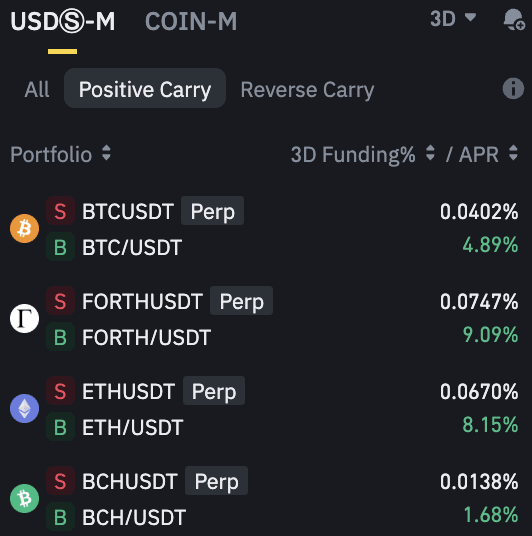
When the funding rate is negative, indicating short positions pay long positions, the bot will take a long position in the futures market and sell an equivalent amount in the spot market. To maintain the original asset balance in the spot market, the bot buys back the asset on the spot market after collecting the funding fees. This strategy is referred to as [Reverse Carry] on the front end.
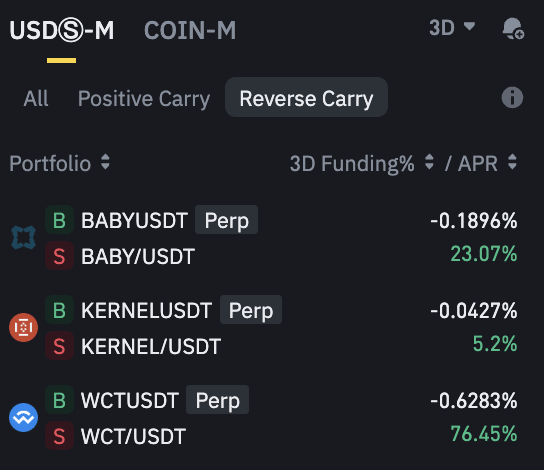
This automated approach ensures that traders can consistently take advantage of funding rate fluctuations, potentially securing profits from these periodic payments.
From the Binance official website, select [Trade] - [Trading Bots] - [Arbitrage Bots].
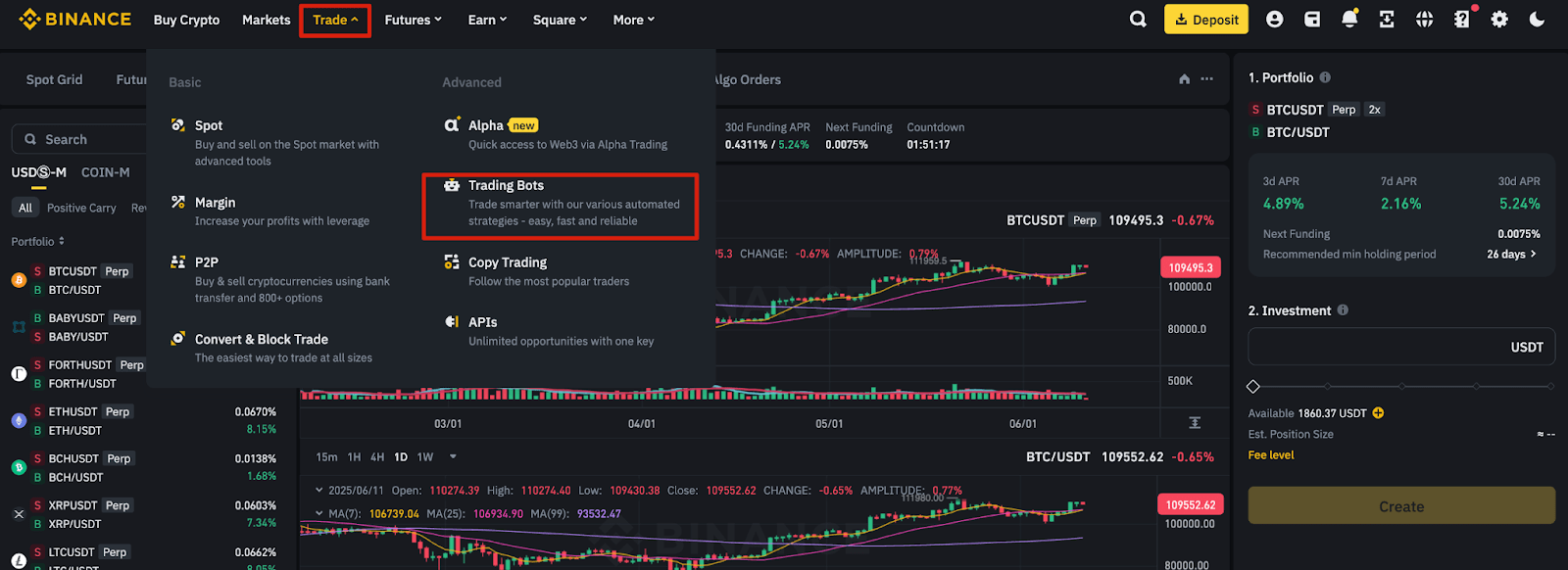
Alternatively, go directly to the [Arbitrage Bots] section on the Trading Bots interface.
Start by selecting a symbol for your arbitrage strategy.
Understand the rates:
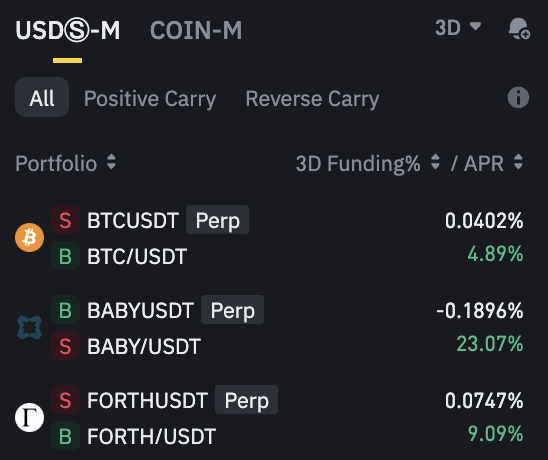
Strategy options:
[Positive Carry]: Use this strategy when the 3-day cumulative funding rate is positive. This involves shorting futures to accumulate funding fees and buying the equivalent amount on the spot market to hedge against price changes.

[Reverse Carry]: Use this strategy when the 3-day cumulative funding rate is negative. This involves going long on futures to collect funding fees and shorting an equivalent amount on the spot market.
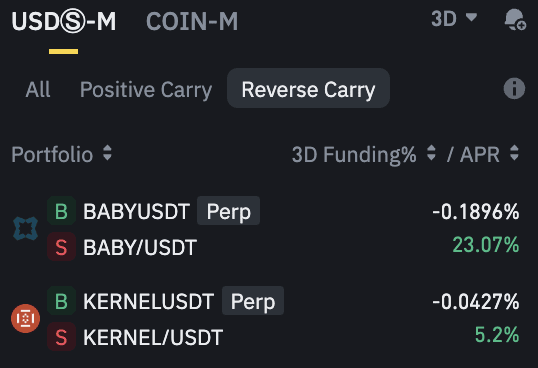
Once you’ve chosen the symbol, go to the order interface to input your parameters.
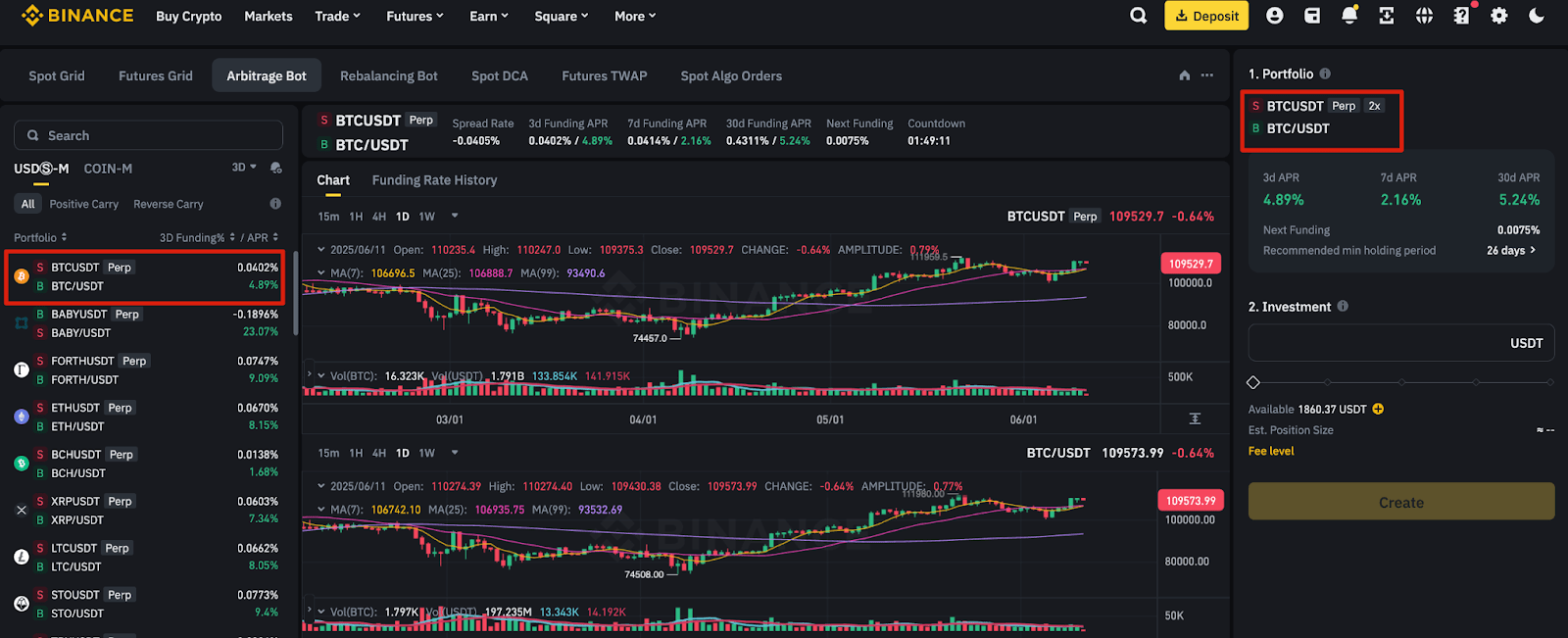
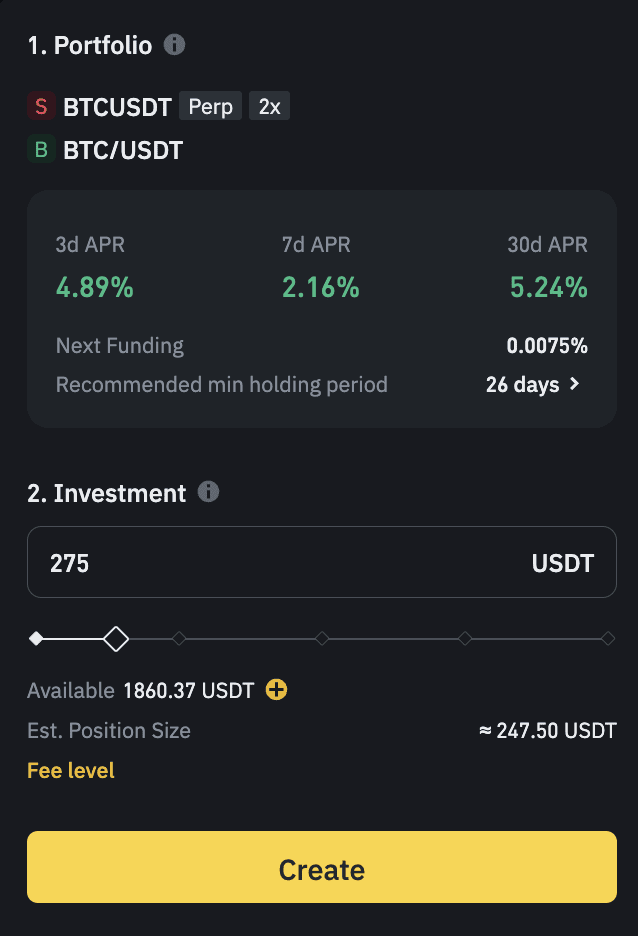
You can visualize your amount available on spot and input your investment amount. Ensure sufficient funds by transferring or depositing into your Spot Account.
Please note:
Buffer mechanism:
10% of the initial investment is reserved as a buffer to account for margin checks and market movements.
For example:
As an option, you can choose to set Entry Spread control when you create an Arbitrage Bot or increase investment to an existing Arbitrage Bot. The Entry Spread will be set to -0.1% by default.
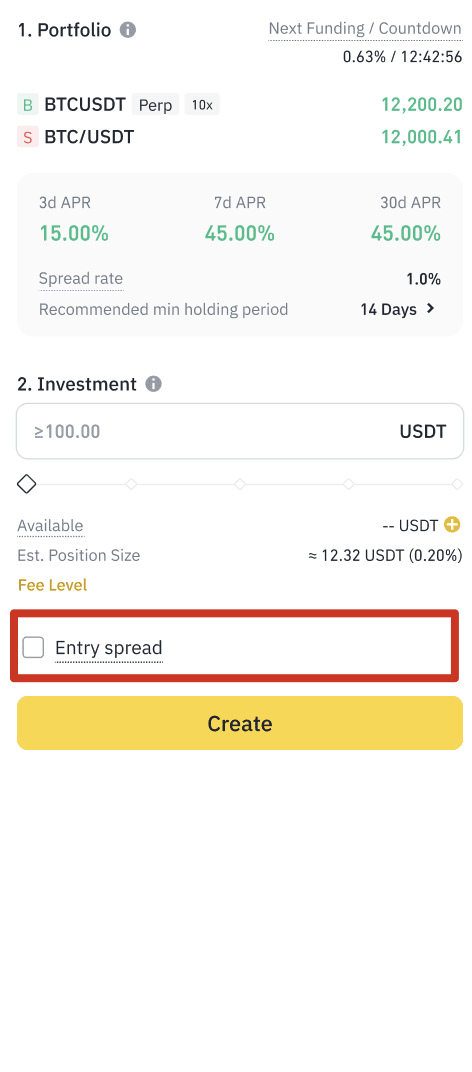
Please note: Before initiating your Arbitrage Bot, please review the [Recommended min holding period]. This is the estimated breakeven period based on the past 30-day average funding rate. Tap on [>] to view the Breakeven Estimator calculation details based on 3/7/30 day Funding Rate Assumption.
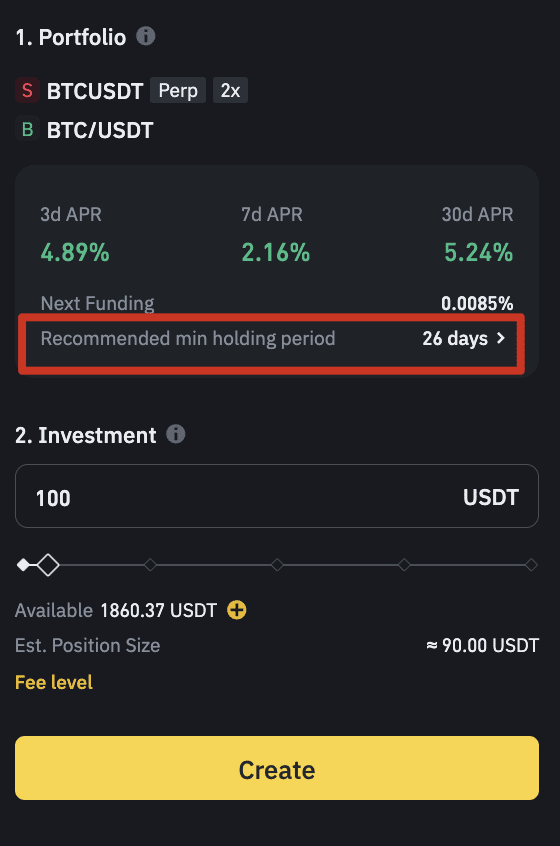
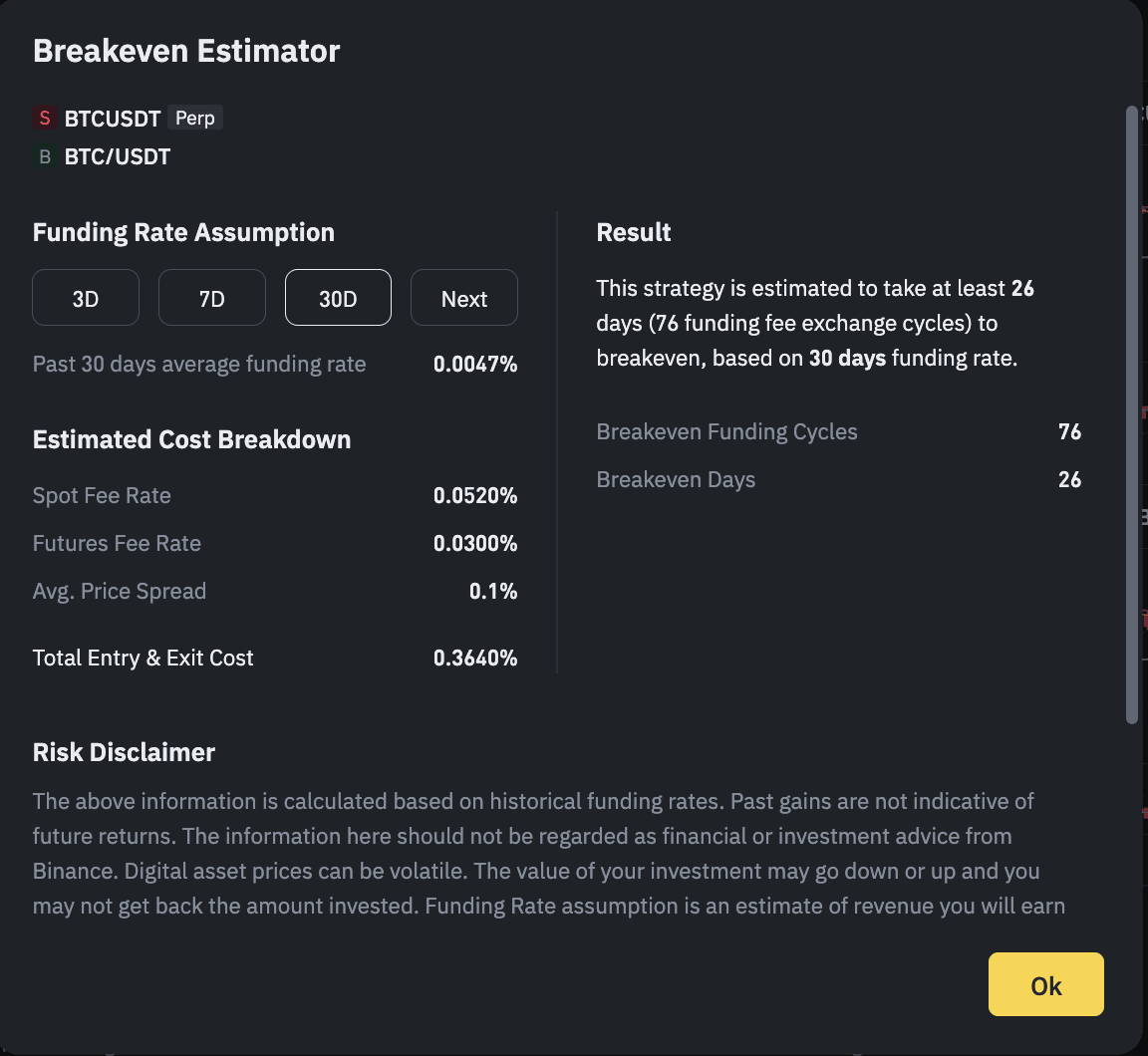
Set your parameters and initiate the strategy. It may take some time for the bot to align the sizes of both legs of the strategy.

When the Arbitrage Bot has a [Creating] or [Pending Increase] status caused by the Entry Spread, you may use [Skip Spread] to clear the current Entry Spread and execute the operation immediately. You may also edit the Entry Spread on detail page.

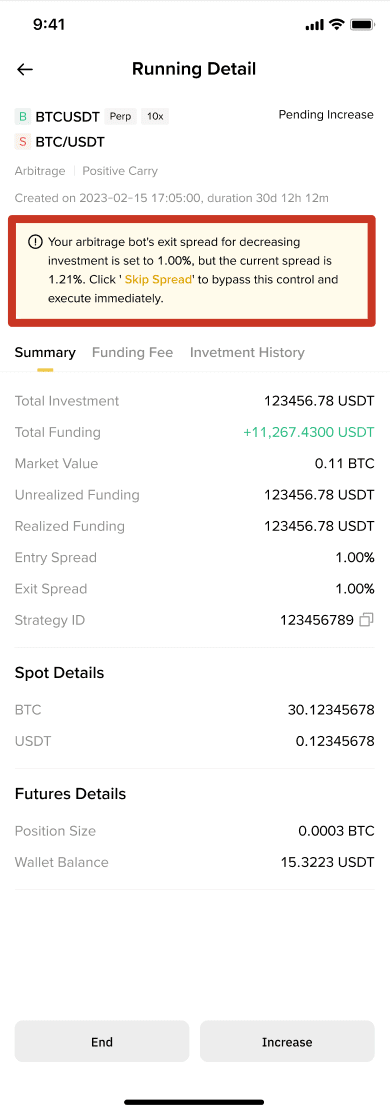
Monitoring your strategies:
Track your strategy from the [Running] tab for details such as:
Managing the Strategy

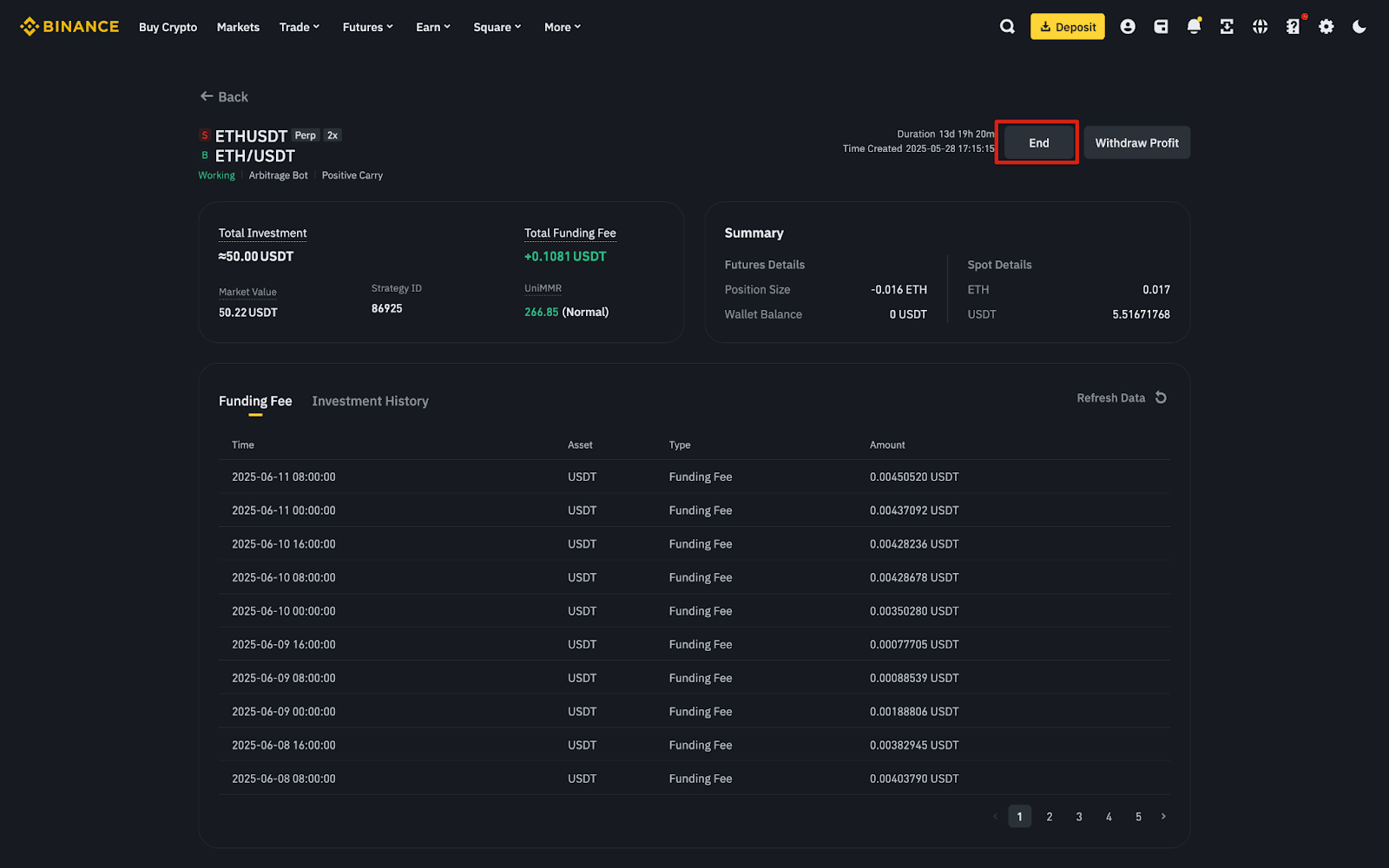
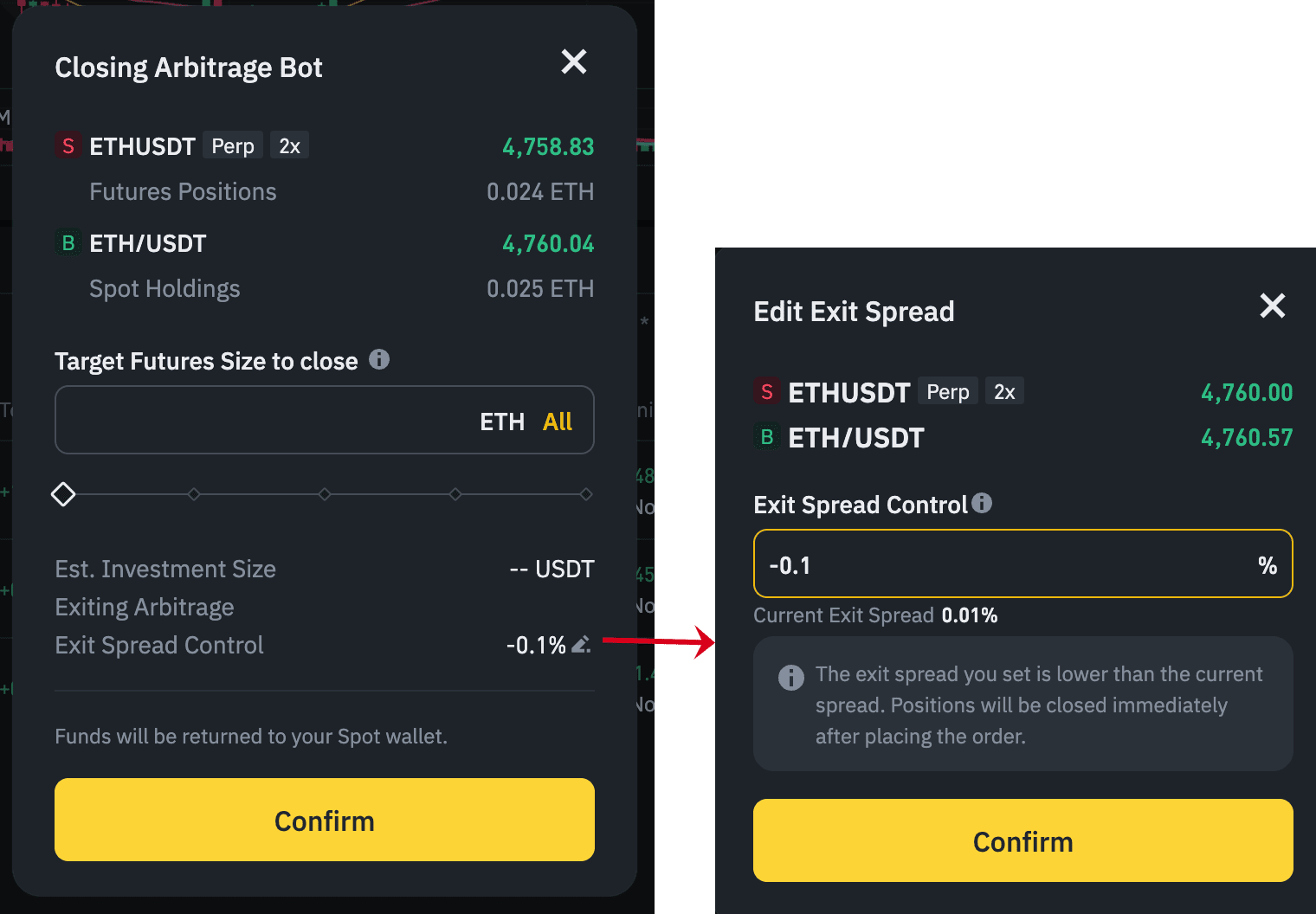
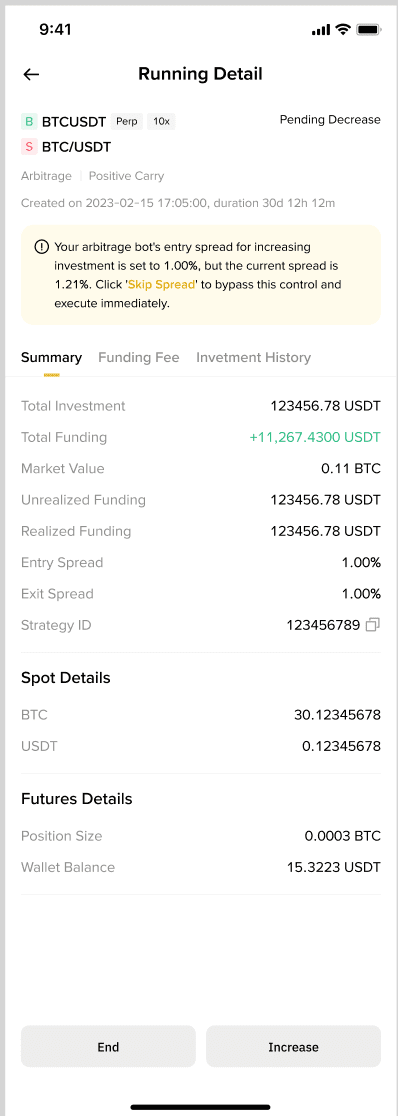
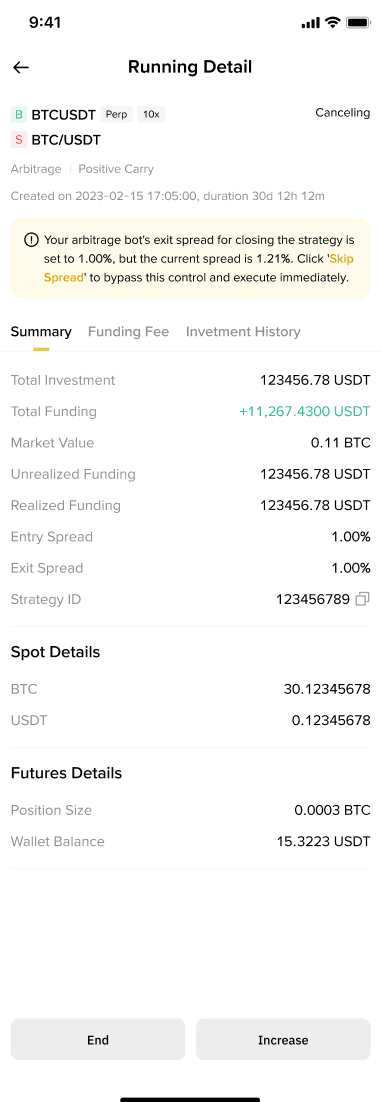



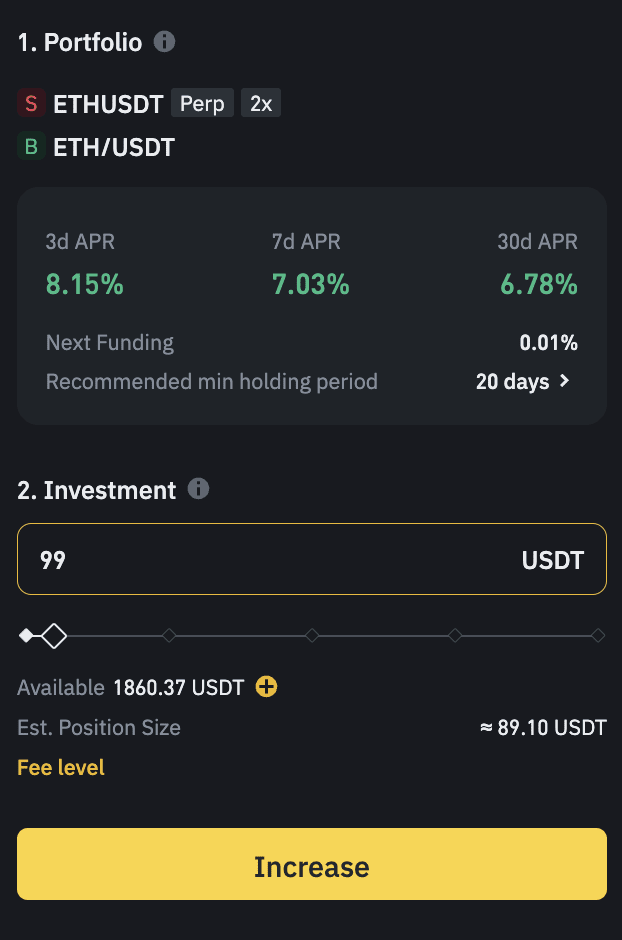

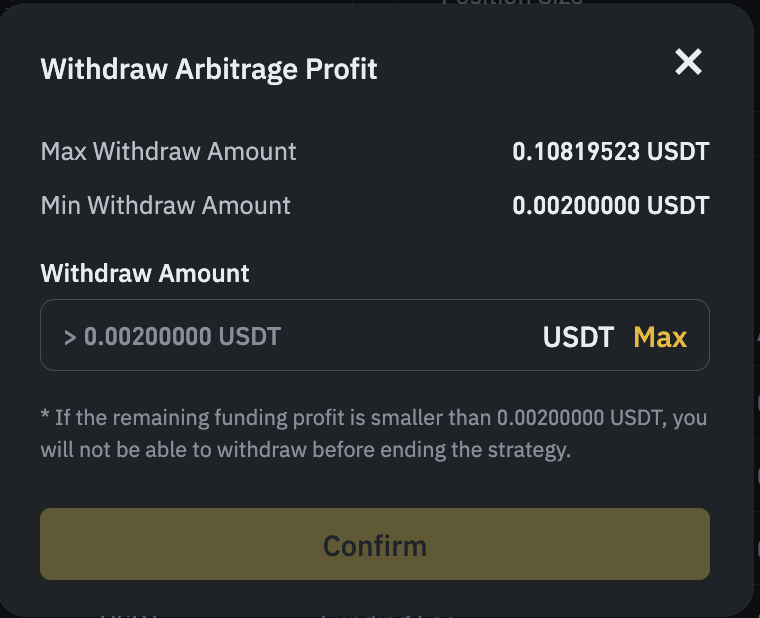
Monitoring your trading bots assets
1. Access your Arbitrage Bots assets and strategies via the [Assets] section:
2. Navigate to the [Assets] - [Trading Bots] from the Binance homepage.
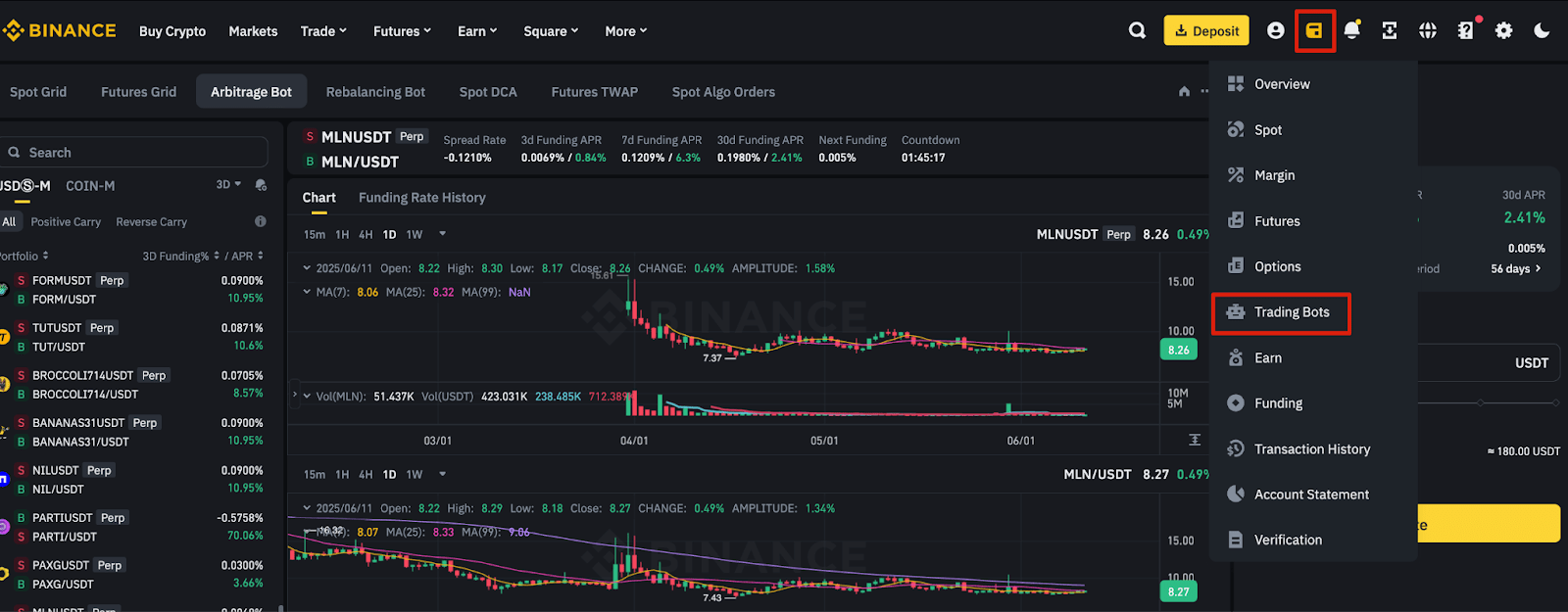
If not already activated, you must first enable your Trading Bots account. Click [OK] to proceed.
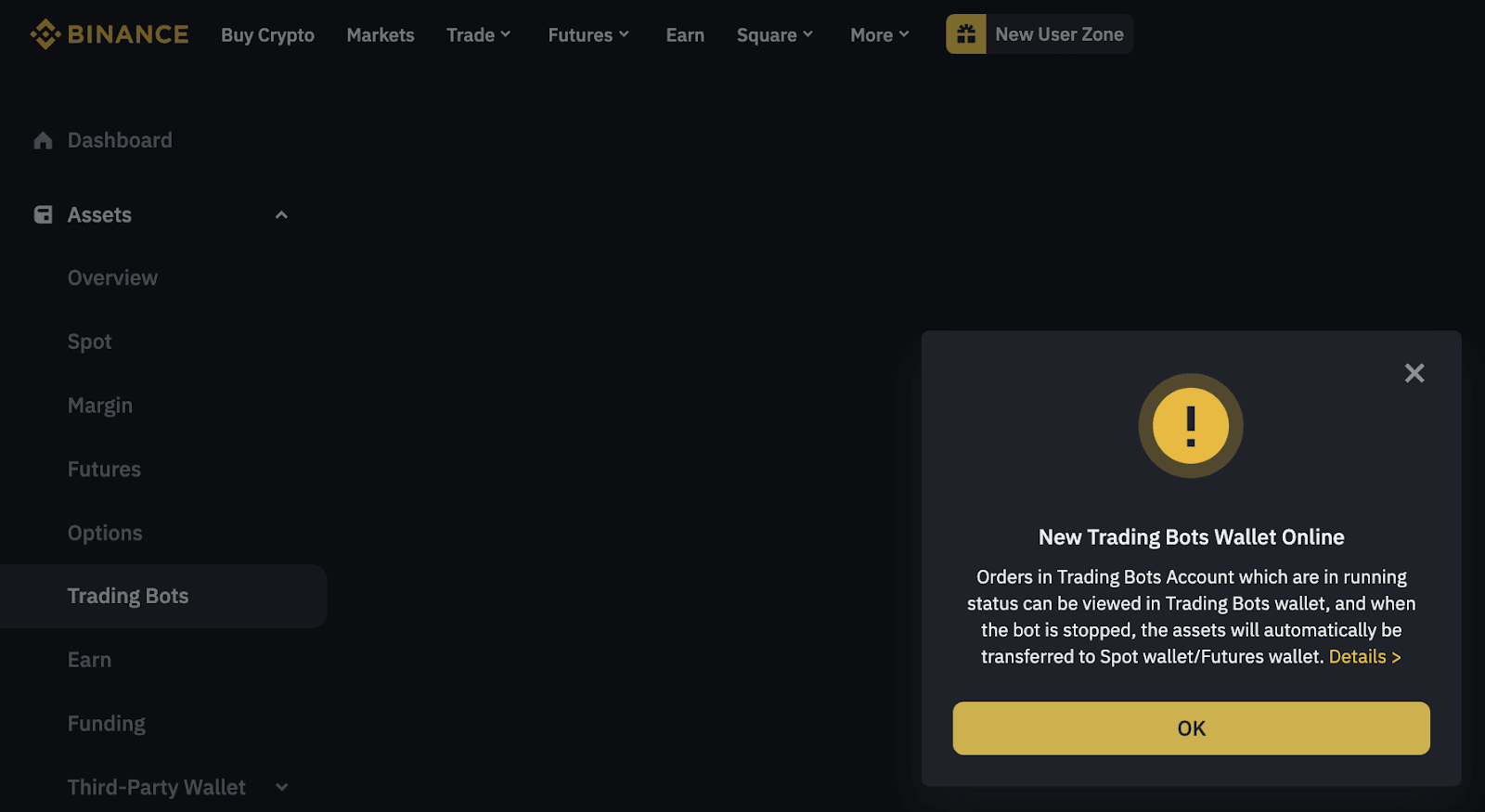
3. To view your running arbitrage strategies, navigate to [Trading Bots] - [Arbitrage Bot] - [Running].
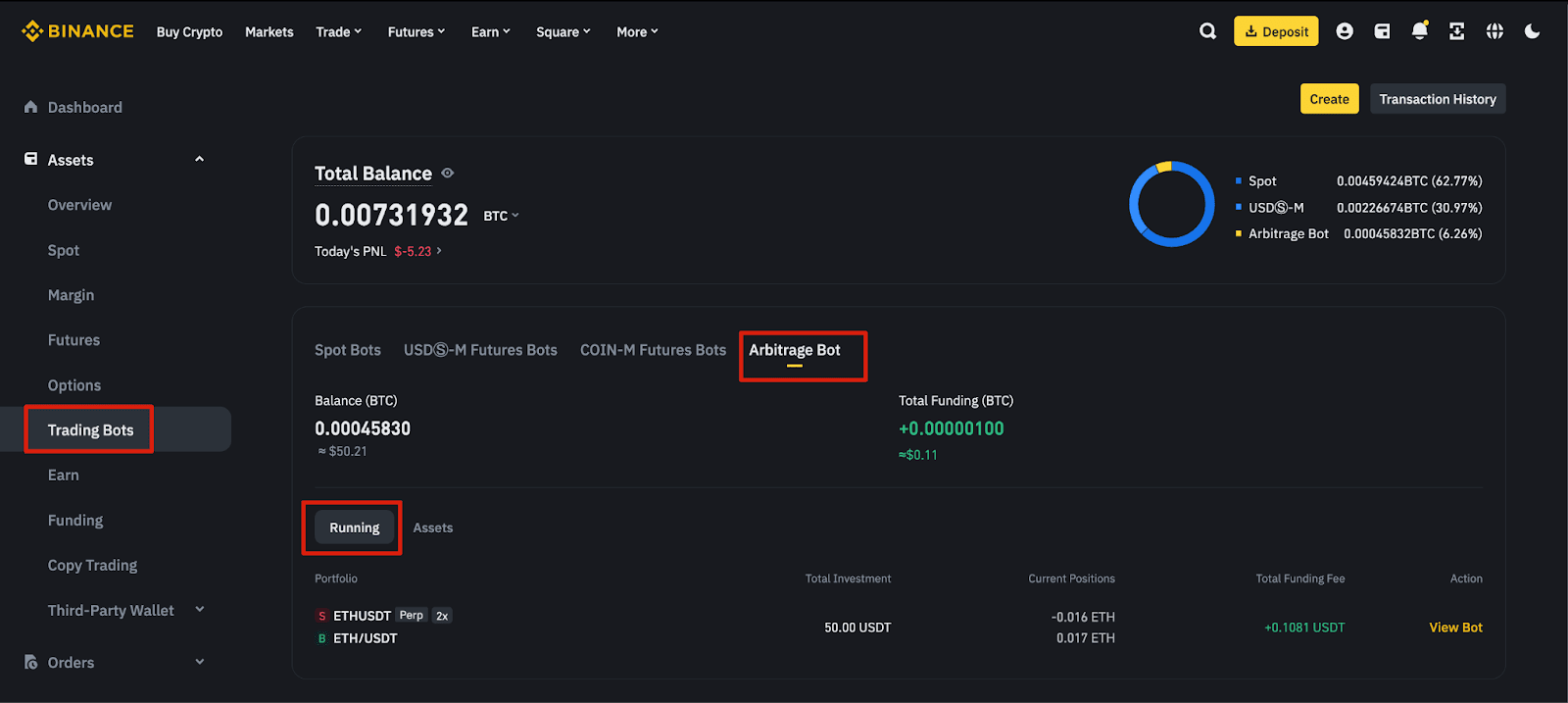
4. To view assets allocated to running arbitrage strategies, select [Arbitrage Bot] - [Assets].
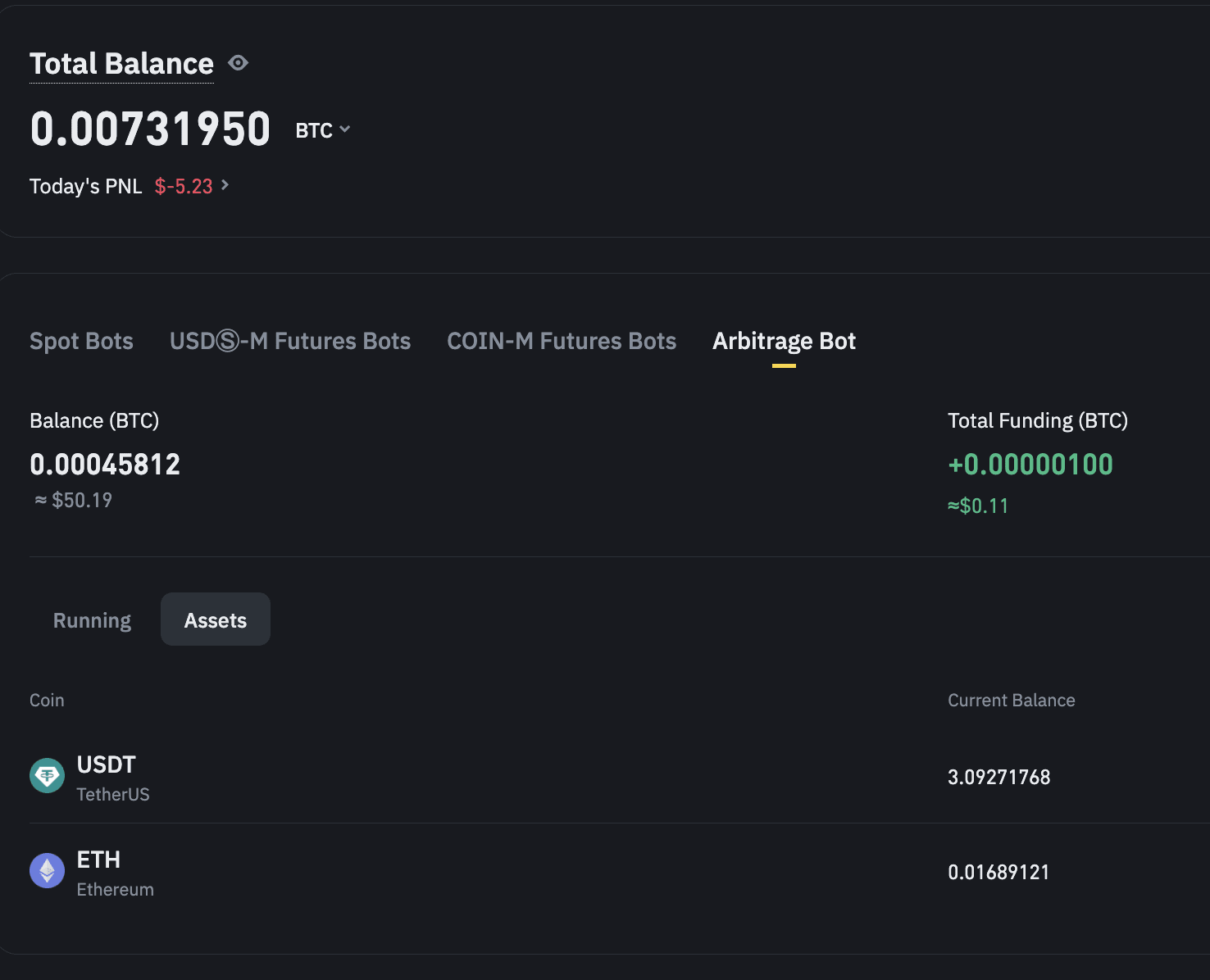
5. To view further details of arbitrage records, click [View Bot].
